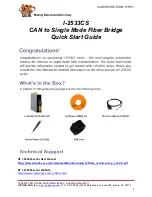
The performance of solar water heating systems in the
Northern Hemisphere is optimized when the collector is
mounted facing True South. Performance, however,
suffers very little when the collector is oriented no
more than 45
°
East or West of True South. The collec-
tor should not be shaded by any permanent obstacle
between 9:00 a.m. and 3:00 p.m. on any day of the
year.
4.2 Collector Tilt
Optimal annual efficiency is achieved by tilting the so-
lar collector at and angle that equals your latitude plus
an additional 10
°
. This tilt angle favors the lower winter
sun when the collector performance is at its lowest and
minimizes overheating during the hottest summer
months.
To ensure proper water drainage from the glazing the
collector must be sloped from horizontal. Never mount
the collector parallel to a flat roof. Use SunEarth
RexRack, Landscape Rack or Universal Tilt Kit products
to raise the collector to a proper angle. The minimum
acceptable tilt angle from horizontal is 15
°.
The solar collectors in a two collector staggered mount
installation must be spaced far enough apart to prevent
winter shading when the sun is at its lowest angle on
the winter solstice.
4.3 Basic Mounting Procedures
The SunEarth solar collector in your Cascade 2 Drain-
back solar system must be mounted in a vertical orien-
tation parallel to the slope of the roof. See Figure 1.
This orientation allows the internal riser tubes to rapid-
ly drain when the circulation pump shuts off.
CRITICAL: Both the collectors and the solar loop
piping must be sloped to drain away from the
highest point in the system back to the drainback
reservoir.
The minimum required slope is 1/4” vertical drop per
foot of horizontal piping run (2% minimum slope). Use
the steepest slope possible on the return line piping to
the drainback reservoir. Water will drain down both the
return tubes directly to the drainback reservoir and the
supply tubes by spinning the pump impeller in the re-
verse direction.
The collector should be mounted as close to the stor-
age tank as possible to minimize heat loss in the piping
runs. If the home has attic access, mounting the collec-
tors near the roof peak provides for additional attic
workspace.
The solar collector should be mounted on the roof in
accordance with these general principles:
4.3.1 The most important structural considerations is
to securely anchor the solar collector and the SunEarth
mounting hardware to the structural members of the
roof with stainless steel hanger bolts, lag bolts, stand-
off mounts or other approved roof attachment meth-
ods. The solar collector shall be attached to the mount-
ing hardware as detailed in Figures (6-9). (Note: The
drawings in the manual detail mounting hardware for
the SunEarth Empire, Imperial, SunBelt and Ther-
moRay series collectors.)
4.3.2 The collector should be raised from the roof sur-
face to allow for rainwater and debris to pass under the
collectors and for proper ventilation of the roofing ma-
terial. There should be at least 1
1
/
2
” of clearance be-
tween the roof surface and the bottom of the solar col-
lectors. Local codes may require greater clearance and
shall be followed accordingly.
4.3.3 When selecting mounting hardware and fasten-
ers it is extremely important to avoid galvanic corro-
sion resulting from the direct contact of incompatible
STRUT ON FOOT MOUNT FOR
COMPOSITION ROOF
Fig.6
COLLECTOR
C-SSN
FOOT MOUNT
FLASHING
STAINLESS LAG BOLT
REXRACK
Fig.5
FRONT
MOUNTING FOOT
REAR
TELESCOPING LEG
SUPPORT STRUT
C-SSN
Summary of Contents for CASCADE 2
Page 29: ...APPENDIX F ...
Page 30: ...APPENDIX F ...












































